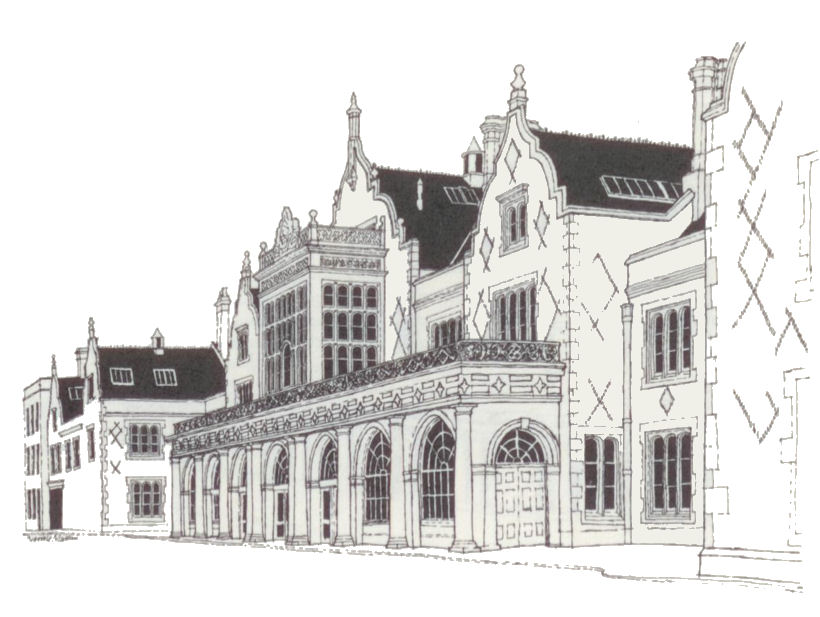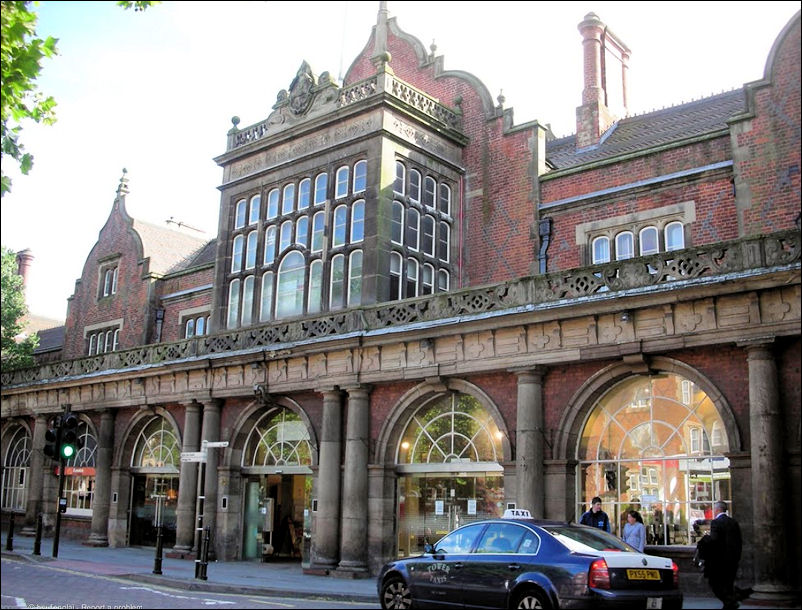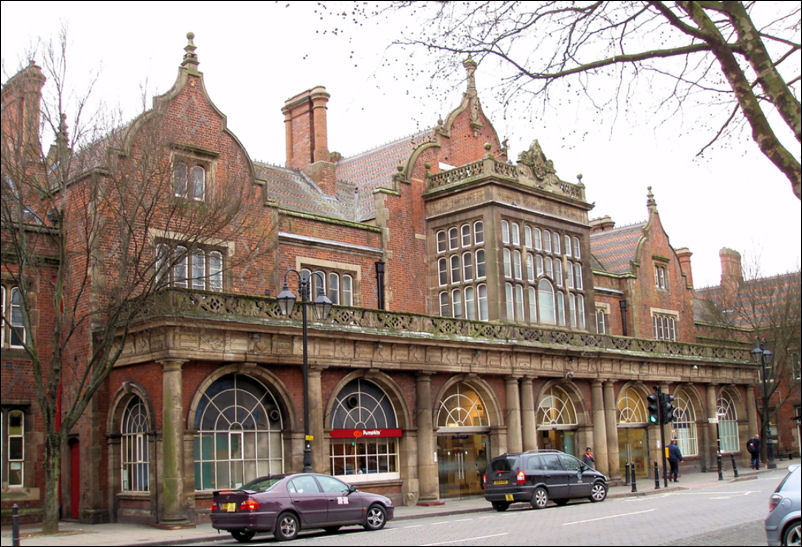|
|
|
![]() back to "The Grand Tour" index
back to "The Grand Tour" index
Neville Malkin's "Grand Tour" of the Potteries
buildings in Stoke
![]()
![]()
![]()
next: Stoke Town Hall
previous: North Stafford Hotel
contents: index of buildings in Stoke
|
No 86 - Stoke
Railway Station
'The Railway Station
at Stoke, Staffordshire.' [Reproduced by permission
of the |

Stoke Railway Station, Winton
Square, Station Road
pen drawing by Neville Malkin - July
1975

Stoke Railway Station - designed by H. A. Hunt of London, and
opened in 1848
photo: © hsufenglai (Google Maps)

Busy Stoke Station must surely be one of the finest examples of Victorian architecture in the
county
photo: © R-P-M (Google Maps)
|
"Busy Stoke Station must surely be one of the finest examples of Victorian architecture in the county. It was designed by H. A. Hunt of London, and the building, begun in 1847, opened in 1848. The complex has shaped gables, built mainly from brick, with black brick lozenge-shaped surface decoration. The Tuscan colonnade on the ground floor is now glazed but, at one time, would have been an open porch. Above this can be seen the former boardroom of the North Staffordshire Railway Company, well-lit by the double transommed windows. The North Staffordshire Railway, later known as "The Knotty," was founded in 1845 and officially opened to passengers on April 17th, 1848, with trains running from a temporary station at Whieldon Grove, Stoke, to Norton Bridge.
An example was the first rate service on the now-defunct Loop Line which ran from Tunstall via Burslem, Cobridge, Hanley, and Etruria to Stoke, continuing along the Derby line to Fenton, and Longton, and finally to Normacot. It boasted an each-way daily service of 50 trains, running at 15-minute intervals during peak periods. Unfortunately, by 1922 the Knotty was on the decline: the small railway company that had resisted takeover bids from larger organisations since the 1850s could no longer hold out. In 1923 it lost its identity and was absorbed by the powerful London Midlands and Scottish Railway Company." |
![]()
![]()
![]()
next: Stoke Town Hall
previous: North Stafford Hotel
contents: index of buildings in Stoke
|
Related Pages Stoke Railway Station - listing details Dates and details of Stoke Station ‘Welcome to Stoke-on-Trent’ - Stoke-on-Trent possesses one of the finest gateways in the country in Winton Square; step off the train in Stoke-on-Trent and you are met with one of the finest examples of Victorian urban planning you are likely to come across.
also see.. Winton Square - Winton's Field and Winton's Wood were part of the Glebe lands of the Stoke Church. Nowadays the area is home to Staffordshire University buildings, Federation House, Stoke Railway Station and the North Stafford Hotel. The Loop Line from Etruria via Hanley, Cobridge, Burslem, Tunstall, Pitts Hill, Newchapel & Goldenhill to Kidsgrove Liverpool Rd. and a junction with the Manchester line was the last of the N.S.R.’s major undertakings. A photo walk across Stoke Fields to Winton's Wood - the parish of St. Simon and St. Jude (Hanley), the area around Staffordshire University. Winton's Wood and Poxon's field.
|